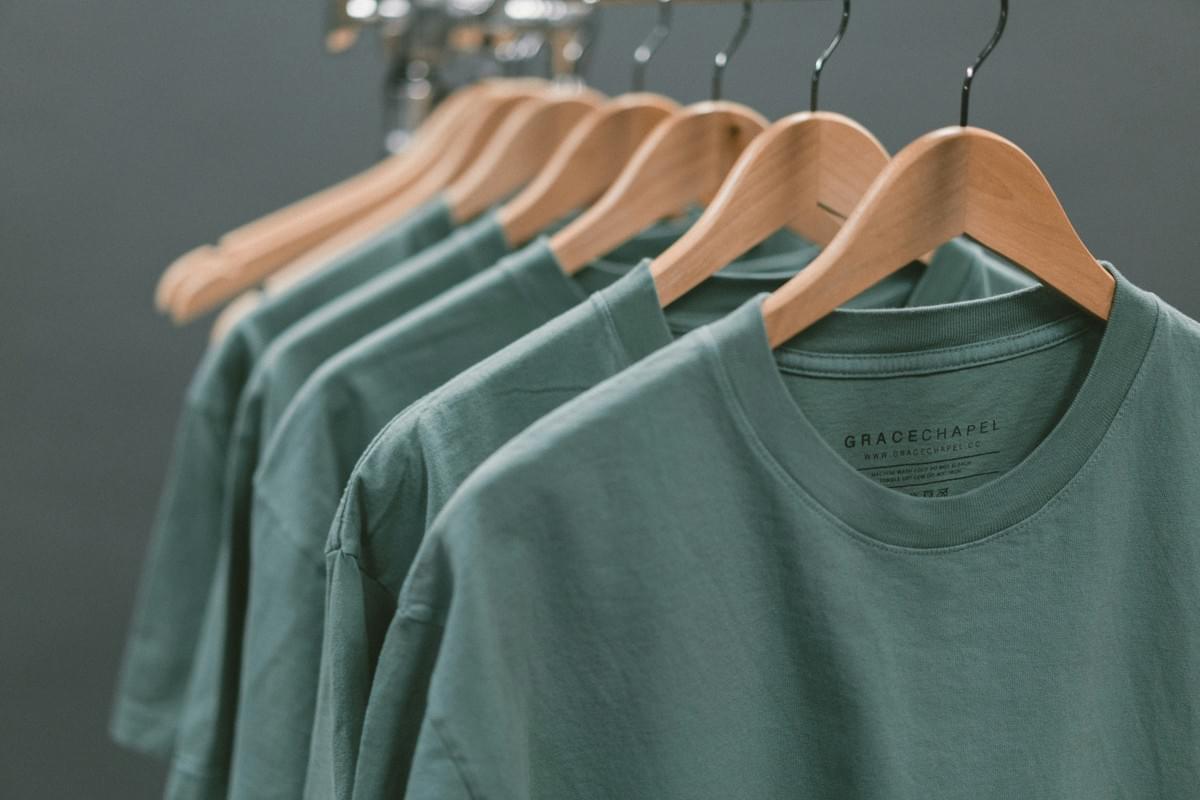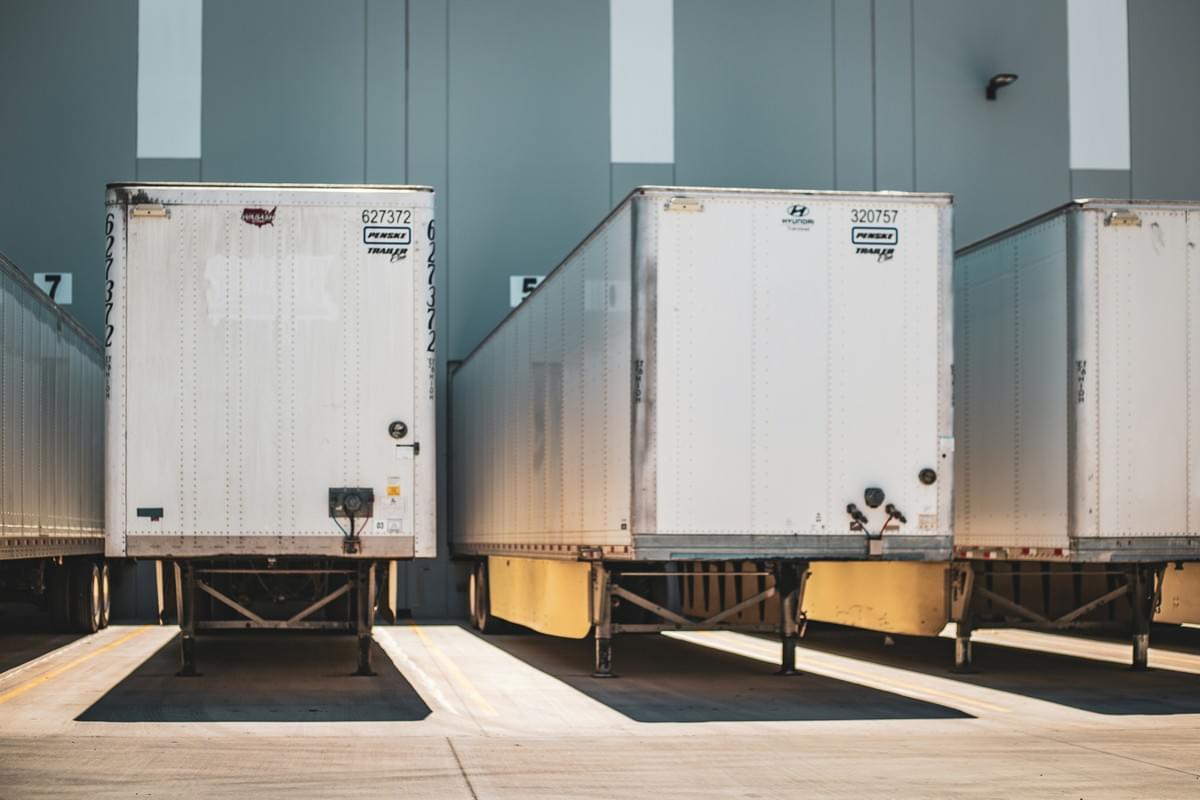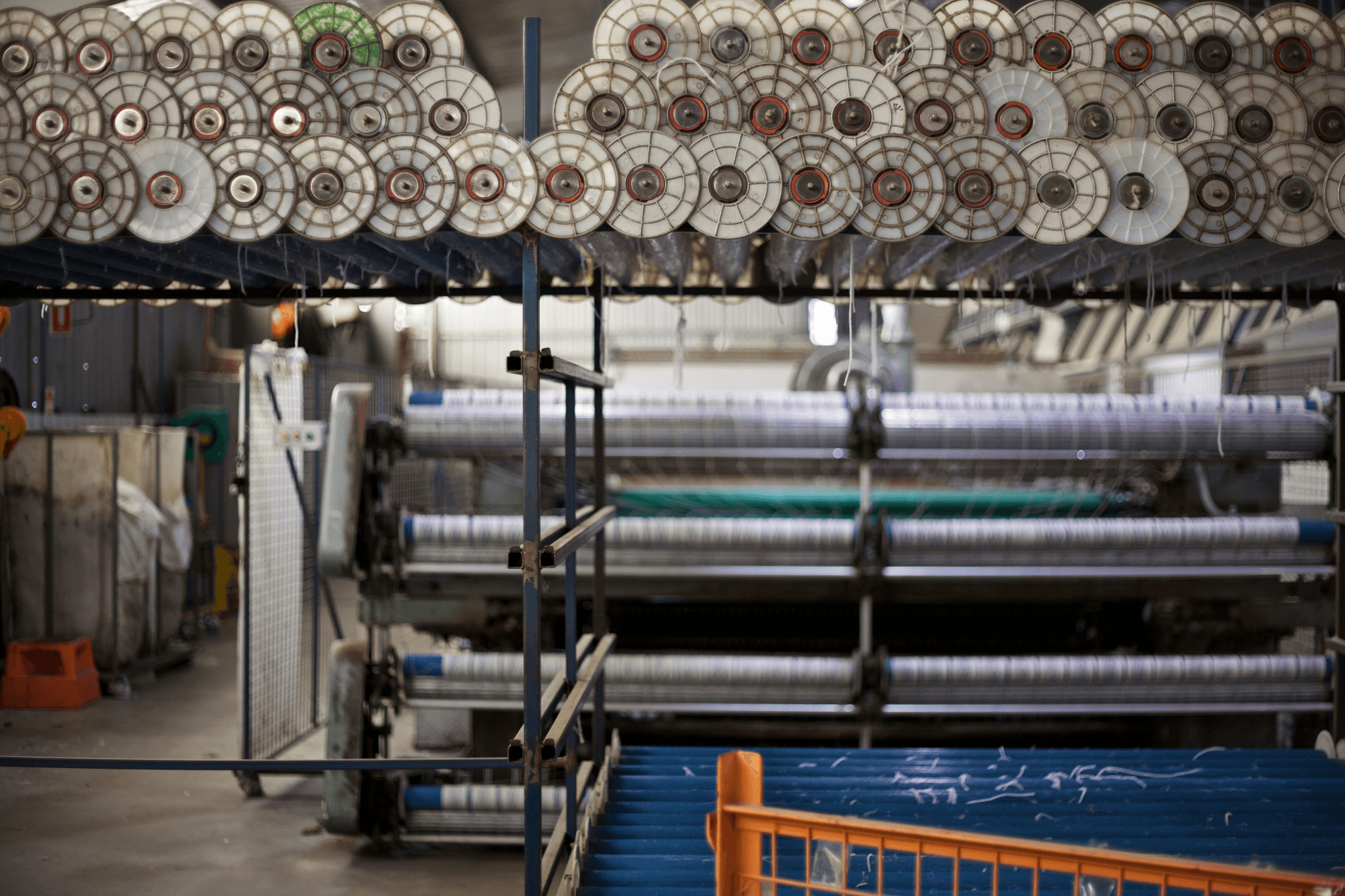Introduction
The textile industry has witnessed a remarkable shift in recent years, with Asia emerging as a powerhouse in importing textiles. This rise can be attributed to various factors, including competitive pricing, vast production capabilities, and an ever-growing demand from markets like Australia. As businesses look to capitalize on these advantages, understanding the intricacies of importing textiles from Asia becomes crucial.
The Rise of Asia in Textile Importing
Asia's dominance in textile importing is largely driven by countries like China, Vietnam, and Bangladesh, which have become synonymous with quality and affordability. These nations have developed robust supply chains that allow for rapid production and delivery of garments and other textile products. As a result, they are now the go-to sources for many Australian companies looking to enhance their product offerings while keeping costs in check.
Understanding Australia's Demand for Textiles
Australia's appetite for textiles has been steadily increasing due to a burgeoning fashion scene and consumer preferences for diverse product ranges. With a growing population that values both quality and sustainability, Australian importers are keen to source textiles that meet these demands without breaking the bank. Consequently, understanding what to concern about when sourcing from Asia is essential for ensuring compliance with local regulations and maintaining high standards.
Overview of Asia's Advantages in Importing
The advantages of importing textiles from Asia extend beyond just cost-effectiveness; they also encompass advanced manufacturing technologies and skilled labor forces that enhance production efficiency. Furthermore, favorable exchange rates often make Asian imports even more appealing financially. However, navigating this landscape requires careful consideration of factors such as quality assurance processes—how to manage the quality assurance of your products in Asian countries—and cultural differences that may impact business relationships.
Key Players in Asian Textile Markets

The Asian textile market is a dynamic landscape characterized by several key players, each contributing uniquely to the global supply chain. Understanding these players is crucial for businesses considering importing textiles, as each country offers distinct advantages and challenges. This section highlights China's dominance, Vietnam's burgeoning garment industry, and Bangladesh's competitive footwear sector.
China's Dominance in Textile Production
China has long been recognized as the heavyweight champion of textile production, boasting an extensive infrastructure and workforce that supports a vast range of textile goods. This dominance makes it a go-to source for businesses looking to import textiles at scale. However, when considering what to concern about when sourcing from Asia, it's essential to recognize that while China offers low costs and high capacity, issues such as intellectual property concerns and fluctuating regulations can pose significant risks.
Moreover, the sheer volume of production in China means that quality assurance must be meticulously managed. Companies need to implement robust quality control processes to ensure their products meet international standards before they hit the shelves. Leveraging services like China Inspection Pro can help navigate these complexities by providing thorough inspections that guarantee compliance with industry benchmarks.
Vietnam's Growing Influence in Garments
Vietnam is rapidly emerging as a critical player in the garment sector due to its strategic location and favorable trade agreements with various countries. As businesses shift their focus away from China for certain products, Vietnam presents itself as an attractive alternative for importing textiles without sacrificing quality or efficiency. The country's commitment to sustainable practices also aligns well with modern consumer demands for eco-friendly products.
However, companies should remain vigilant about what to concern about when sourcing from Asia—especially regarding labor practices and environmental regulations in Vietnam’s factories. Ensuring compliance with local laws while maintaining ethical standards can be challenging but essential for brand reputation. Quality assurance remains paramount here too; utilizing expert inspection services can help manage these risks effectively.
Bangladesh's Competitive Footwear Sector
Bangladesh has carved out a niche in the global footwear market through its competitive pricing and skilled labor force dedicated to producing high-quality products. The country's focus on craftsmanship has made it an attractive option for brands looking to diversify their sourcing strategies when importing textiles related to footwear manufacturing specifically. With rapid growth in this sector, Bangladesh is poised to become an even more significant player on the world stage.
Nevertheless, navigating this market requires awareness of potential pitfalls associated with sourcing from Asia—such as supply chain disruptions or political instability that could impact production timelines or costs. To mitigate these risks effectively, businesses must prioritize quality assurance processes right from supplier selection through final product delivery stages. Engaging with firms like China Inspection Pro ensures rigorous checks are performed throughout production cycles so that your imported textiles meet both your expectations and regulatory requirements.
Cost-Effectiveness and Competitive Pricing
When it comes to importing textiles, one of the most compelling reasons businesses look to Asia is its cost-effectiveness. The region has established itself as a manufacturing powerhouse, offering lower production costs that appeal to companies seeking to maximize their profit margins. This economic advantage is driven by various factors, including labor costs, material availability, and operational efficiencies that are often unmatched in other regions.
Why Asia Offers Lower Manufacturing Costs
Asia's lower manufacturing costs can largely be attributed to economies of scale and established supply chains. Countries like China have invested heavily in infrastructure and technology, enabling them to produce textiles at a fraction of the cost seen in Western nations. Moreover, many Asian countries benefit from abundant raw materials and a workforce eager for job opportunities, which keeps wages comparatively low while still providing quality output—an essential consideration when thinking about what to concern about when sourcing from Asia.
Additionally, government policies in several Asian countries encourage foreign investment by offering tax incentives or subsidies for textile production. This further reduces overhead costs for manufacturers and ultimately leads to more competitive pricing for businesses involved in importing textiles. As companies navigate these options, they must remain vigilant about maintaining quality standards alongside cost savings.
Comparing Labor Costs Across Regions
Labor costs are a significant factor influencing the overall expense of textile production; thus, comparing these across regions is crucial for businesses looking to make informed decisions. In countries like Bangladesh and Vietnam, labor remains significantly cheaper than in Western nations or even some parts of Eastern Europe. However, while lower wages can entice manufacturers looking for affordable options in importing textiles, it’s important not to overlook the implications on quality assurance.
As you evaluate different regions for sourcing textiles, consider not just the hourly wage but also the skill level of workers available in each area. Regions with skilled labor may command higher wages but often yield superior craftsmanship—something that could save you headaches down the line when managing quality assurance processes with your products in Asian countries. Balancing cost with skill will help ensure your final product meets market expectations without sacrificing profitability.
The Impact of Exchange Rates on Imports
Exchange rates play a critical role in determining how much you'll ultimately pay when importing textiles from Asia. Fluctuations can significantly affect purchasing power; even slight changes can result in unexpected increases or decreases in import costs over time. Businesses must stay informed about currency trends as part of their strategic planning process when considering how best to manage their sourcing efforts.
Additionally, understanding exchange rates helps mitigate risks associated with international trade agreements that may impact pricing structures based on currency fluctuations over time—another aspect worth considering under what to concern about when sourcing from Asia? By utilizing tools such as forward contracts or hedging strategies against currency risk, companies can stabilize their costs over longer periods while ensuring they maintain competitive pricing against rivals who may not take such precautions.
In summary, navigating the complexities of cost-effectiveness and competitive pricing requires careful consideration of various factors including labor costs and exchange rates—all pivotal elements when engaging with Asian markets for importing textiles.
What to Concern About When Sourcing from Asia?

Sourcing textiles from Asia can be a rewarding venture, but it comes with its fair share of complexities. Understanding what to concern about when sourcing from Asia is crucial for ensuring a smooth importing process. From cultural nuances to regulatory frameworks, being well-informed will help you navigate potential pitfalls and make the most of your textile importing experience.
Navigating Cultural Differences in Business
Cultural differences can significantly impact business dealings when importing textiles from Asia. Different communication styles, negotiation tactics, and business etiquette may lead to misunderstandings if not properly addressed. It's essential to invest time in understanding the cultural context of your suppliers; this not only fosters better relationships but also enhances collaboration and trust.
Building rapport with Asian partners often involves more than just transactional interactions; it requires patience and respect for local customs. For instance, understanding the importance of hierarchy in countries like China can influence how you approach negotiations and decision-making processes. Ultimately, successful importing textiles hinges on effective communication that bridges these cultural divides.
Understanding Import Regulations and Tariffs
Navigating import regulations and tariffs is another critical aspect when sourcing textiles from Asia. Each country has its own set of rules governing what can be imported, how much tax you'll need to pay, and any necessary documentation required for clearance. Familiarizing yourself with these regulations will save you time, money, and headaches down the line.
Tariffs can vary significantly based on the type of textile or garment being imported, which means keeping up-to-date with changes in trade policies is essential for cost-effective sourcing decisions. Moreover, ensuring compliance with safety standards and labeling requirements will help you avoid fines or delays that could jeopardize your supply chain continuity. Remember that understanding these regulations not only protects your business but also helps ensure a smooth importing process.
Managing Supply Chain Risks
Managing supply chain risks is paramount when engaging in textile importing from Asia; disruptions can arise due to various factors such as political instability or natural disasters. Establishing robust contingency plans will prepare you for unexpected challenges that could affect product delivery timelines or quality assurance processes. It’s wise to diversify your supplier base across different regions within Asia to mitigate risks associated with relying too heavily on one source.
Additionally, working closely with quality inspection services like China Inspection Pro can bolster your risk management strategy by ensuring product excellence before they reach your doorstep. Quality Inspection delivers professional services focused on product excellence; their specialists rigorously examine every detail so that your goods meet or exceed industry standards while providing actionable recommendations based on their findings. By incorporating such measures into your supply chain management practices, you'll enhance resilience against potential disruptions while maintaining high-quality standards throughout the importing textiles process.
How to Manage the Quality Assurance of Your Products in Asian Countries?

When it comes to importing textiles, ensuring quality assurance is paramount. The vast landscape of Asian manufacturing presents both opportunities and challenges, making it essential for businesses to adopt effective strategies for quality management. By understanding how to manage the quality assurance of your products in Asian countries, you can mitigate risks and enhance your brand reputation.
Partnering with Quality Inspection Services
One of the most effective ways to ensure product quality while importing textiles is by partnering with reputable quality inspection services. These services specialize in scrutinizing every aspect of textile production, from raw materials to finished goods, ensuring that they meet specified standards. By leveraging their expertise, businesses can avoid costly mistakes and ensure compliance with international regulations.
Quality inspection services not only identify defects but also provide valuable insights into production processes. This collaboration allows companies to address issues proactively rather than reactively, leading to improved overall product quality. When considering what to concern about when sourcing from Asia, partnering with these services should be at the top of your list.
The Role of China Inspection Pro in Ensuring Quality
China Inspection Pro plays a crucial role in enhancing the quality assurance process for businesses involved in importing textiles from Asia. With a focus on delivering professional services aimed at product excellence, their team rigorously examines every detail throughout the manufacturing process. Their commitment ensures that your products meet or exceed industry standards and satisfy market expectations.
By providing clear and actionable recommendations based on thorough inspections, China Inspection Pro helps businesses make informed decisions that elevate overall product quality. Their deep experience and advanced methodologies guide clients through complex challenges associated with sourcing from Asia—making them an invaluable partner for anyone looking to import textiles effectively.
In addition to inspections, they offer support in navigating regulatory requirements specific to various markets. This assistance can significantly reduce risks associated with non-compliance while boosting consumer confidence in your brand.
Implementing Effective Quality Control Processes
Implementing effective quality control processes is essential for any business involved in importing textiles from Asia. Establishing clear guidelines for production standards ensures that all stakeholders understand expectations right from the start—reducing misunderstandings down the line. Regular audits and feedback loops allow companies to continuously refine their processes based on real-time data and performance metrics.
Moreover, integrating technology into your quality control processes can streamline operations significantly. Tools such as automated inspections or data analytics enable quicker identification of defects while providing insights into potential areas for improvement across supply chains—essentially answering many questions around what to concern about when sourcing from Asia.
Ultimately, a robust approach towards managing quality assurance not only safeguards your investment but also enhances customer satisfaction—a key driver in today’s competitive textile market landscape.
Sustainable Practices in Asian Textile Manufacturing
As the global demand for eco-friendly products grows, Asia is stepping up to the plate with innovative sustainable practices in textile manufacturing. Countries like China, Vietnam, and Bangladesh are not only recognizing the need for greener operations but are also implementing strategies that align with international sustainability standards. This shift is crucial for businesses looking to balance profitability with environmental responsibility while importing textiles.
Asia's Response to Eco-Friendly Trends
Asia's response to eco-friendly trends has been nothing short of remarkable. Manufacturers are increasingly adopting sustainable materials, such as organic cotton and recycled polyester, which significantly reduce their carbon footprint. Moreover, many companies are investing in cleaner production technologies that minimize waste and energy consumption—an essential consideration for those pondering what to concern about when sourcing from Asia.
The rise of consumer awareness regarding environmental issues has prompted brands to prioritize sustainability in their supply chains. As a result, Asian manufacturers are more willing than ever to collaborate on initiatives aimed at reducing environmental impact. This proactive approach not only meets consumer expectations but also positions these countries as responsible players in the global textile market.
Certifications to Look for When Importing
When importing textiles from Asia, it's important to look out for specific certifications that demonstrate a commitment to sustainability and ethical practices. Certifications such as Global Organic Textile Standard (GOTS), OEKO-TEX Standard 100, and Fair Trade ensure that products meet rigorous environmental and social criteria. These certifications can serve as a reliable benchmark when evaluating potential suppliers and help mitigate risks associated with what to concern about when sourcing from Asia.
Additionally, having these certifications can enhance your brand’s reputation among environmentally conscious consumers who prioritize sustainable products in their purchasing decisions. By aligning your sourcing strategy with certified suppliers, you can confidently manage quality assurance of your products while supporting ethical manufacturing practices across the region. It’s a win-win situation—better quality textiles paired with peace of mind.
Case Studies of Successful Sustainable Brands
Several successful brands have emerged as leaders in sustainable practices within Asian textile manufacturing by integrating eco-friendly processes into their operations. For instance, Patagonia collaborates closely with factories in Vietnam that adhere strictly to sustainability standards while producing high-quality outdoor apparel. Their commitment not only reduces environmental impact but also sets an example for other companies considering how to manage the quality assurance of their products in Asian countries.
Another noteworthy example is Uniqlo’s efforts towards sustainability through its Uniqlo Sustainability initiative which focuses on using recycled materials and reducing water usage during production processes in China and Bangladesh factories. These case studies illustrate how integrating sustainable practices leads not only to enhanced product quality but also strengthens brand loyalty among consumers increasingly concerned about environmental issues.
By examining these successful brands' approaches, businesses can glean valuable insights into effective strategies for importing textiles sustainably while ensuring high-quality standards are met throughout the supply chain.
Conclusion

In conclusion, the landscape of importing textiles from Asia is not only dynamic but also filled with opportunities and challenges. As Australia continues to seek reliable sources for textile imports, understanding the nuances of this market becomes essential. By focusing on the best Asian countries for textile imports, businesses can make informed decisions that align with their quality and sustainability goals.
The Best Asian Countries for Textile Imports
When it comes to importing textiles, several countries in Asia stand out due to their unique advantages. China remains a heavyweight in textile production, boasting an extensive supply chain and advanced manufacturing capabilities. Meanwhile, Vietnam is rapidly gaining traction with its competitive garment sector, while Bangladesh offers a robust footwear industry that cannot be ignored.
These countries not only provide cost-effective solutions but also maintain a focus on quality and efficiency in their manufacturing processes. However, businesses must remain vigilant about what to concern about when sourcing from Asia; factors such as cultural differences and regulatory requirements can impact overall success. Ultimately, identifying the best Asian countries for textile imports is crucial for companies aiming to boost their market presence while ensuring product excellence.
Future Trends in Textile Importing
The future of importing textiles is poised for transformation as sustainability takes center stage in consumer preferences and regulatory frameworks. More brands are prioritizing eco-friendly practices, prompting manufacturers across Asia to adapt by integrating sustainable materials and production methods into their operations. This shift not only meets consumer demand but also aligns with global initiatives aimed at reducing environmental impact.
As technology continues to evolve, we can expect advancements in automation and digitalization within the textile industry that will enhance efficiency and transparency throughout supply chains. Businesses should prepare for these changes by staying informed about emerging trends that could influence how they manage quality assurance of products sourced from Asian countries. Embracing innovation while adhering to sustainable practices will set companies apart in a competitive marketplace.
Making Informed Decisions for Quality Products
To ensure success when importing textiles from Asia, it’s vital to make informed decisions regarding sourcing partners and quality management processes. Companies should prioritize collaboration with reputable inspection services like China Inspection Pro; they specialize in delivering professional services focused on product excellence through rigorous examinations of goods before they reach consumers' hands. By leveraging such expertise, businesses can mitigate risks associated with poor-quality products.
Moreover, understanding what to concern about when sourcing from Asia includes navigating import regulations and tariffs effectively—this knowledge empowers companies to avoid costly pitfalls during procurement processes. Finally, implementing effective quality control measures allows businesses to maintain high standards throughout production cycles while ensuring compliance with both market expectations and regulatory requirements.
